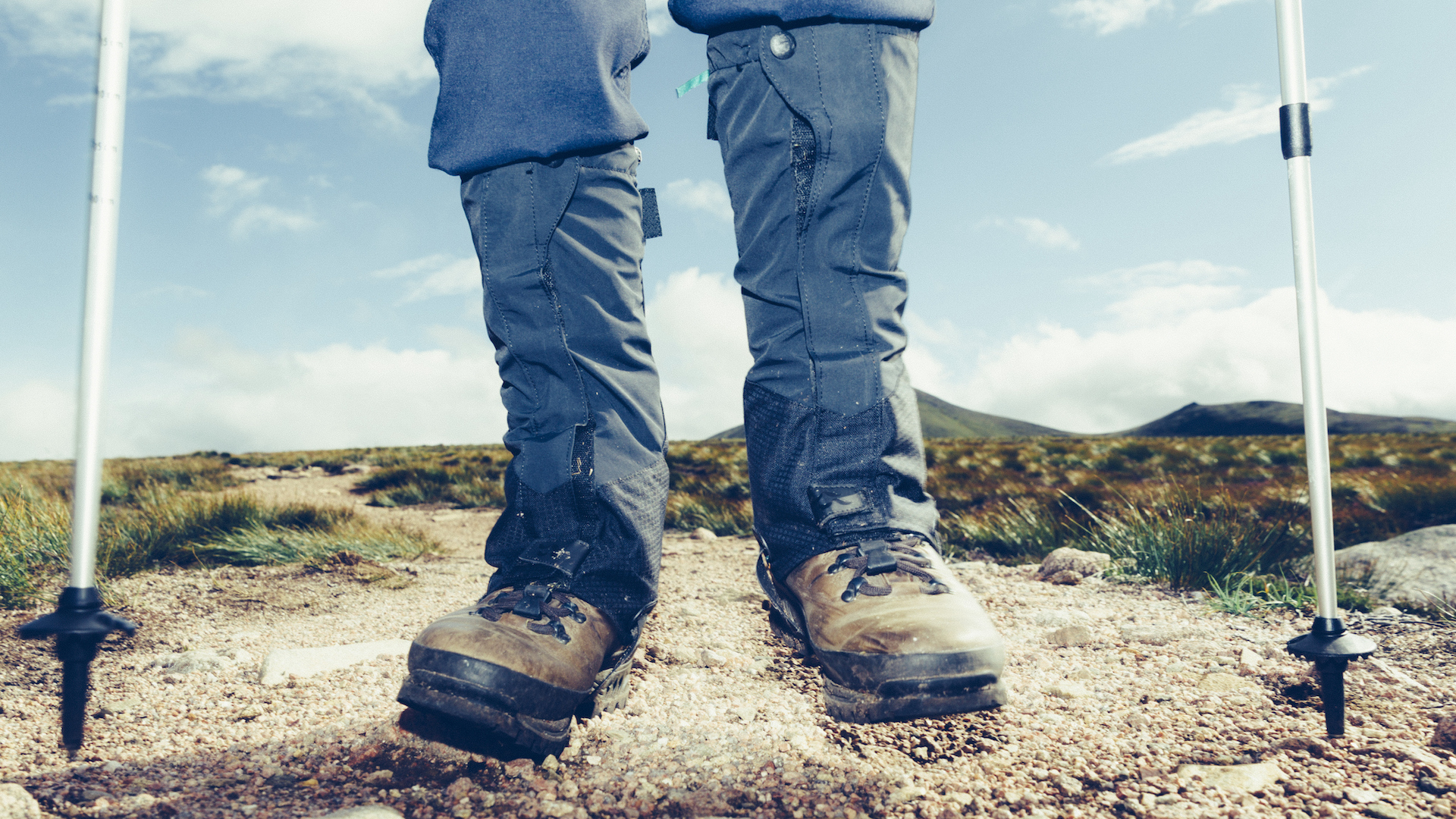
There comes a time in one’s apprenticeship with the mountains when someone, usually more experienced, mentions gaiters. “Have you considered gaiters?” they ask. It might take a moment to realise they’re not actually talking about aggressive, snappy reptiles – after all, the region’s rivers aren’t home to alligators, or crocodiles for that matter. No, they’re talking about fabric tubes that strap under hiking boots and fasten around the lower leg.
We get it. You’ve already forked out on expensive Gore-Tex hiking boots and invested in waterproof rain pants to compliment your standard hiking pants. Surely this is enough. Do you really need gaiters?
Well, it depends on the kind of adventures you plan to take on. For easier hikes in the summer months, strapping on gaiters can be akin to using a sledgehammer to crack a nut. In a word, overkill. That is, unless you’re in a particularly dry and dusty environment, when ankle gaiters are useful for keeping dirt and debris out. However, for mountain adventures that have potentially wet terrain or involve river crossings, mountaineering gaiters are highly recommend, unless you enjoy having wet feet. Finally, for alpine exploits above the snow line, gaiters are essential.
Meet the expert
Today's best deals
What are gaiters?

Gaiters are fabric tubes that wrap around the lower leg, forming an effective shield at the point where your hiking boots and your pants meet. To put on gaiters, the two long ends of the fabric are usually attached via lengthy Velcro strips or zips along the front, while there’s are hooks that attach to your hiking boots’ laces and straps that go under the boots.
Longer mountaineering gaiters are waterproof, often featuring a Gore-Tex membrane, while lighter ankle gaiters are primarily intended for dry and dusty conditions. Most are made from polyester or nylon, while the most robust pairs feature abrasion-resistant fabrics like Cordura.
1: Adventures above the snow line

While having wet feet on a summery hike is a nuisance, it’s potentially dangerous on a winter mountaineering adventure, where there’s always the danger of hypothermia. Conditions in the winter mountains can throw heavy rain, blizzards and knee-deep snow your way. This isn’t a problem, as you can stay warm and dry if you’re kit is up to the job.
Snow is the main offender here. If you’re tramping through deep snow for hours on end without gaiters, it will seep through to your feet eventually. As wonderfully waterproof as the best winter boots are, there’s obviously no way they can ever be completely watertight, as there will always need to be big holes to put your feet into. Gaiters cover this weak point, as well as providing a abrasion-resistant shield against icy rocks and the like.
2: River crossings

Let’s say you’re not someone who regularly ventures out into winter conditions. Do you still need gaiters? The answer is still a resounding yes, especially if there’s going to be wet stuff underfoot. If you plan to cross rivers during your hiking adventures, a pair of gaiters is nigh on essential. I’m not talking about crossing footbridges here, I’m talking about wild river crossings.
While it’s often possible to hop between semi-submerged boulders and rocks, finding your way to the opposite bank without having to put your boots into the water, this isn’t always the case. Gaiters provide an essential shield against water ingress and sediment carried by a river’s flow, joining forces with your waterproof boots and rain pants to keep you dry.
As an aside, we’d always recommend carrying trekking poles when river crossings are on the agenda, as they are very useful for probing beneath the surface and lending an extended arm to others looking to cross.
3: Negotiating boggy terrain

Just as deep snow or river water will seep in over the top of your hiking footwear, so will water on the surface of saturated terrain. Bogs; peat hags; long, wet grass; and other kinds of swampy ground are a feature of many hiking regions, even during the drier months.
Sometimes, your feet will stay dry for an entire hike, apart from one infuriatingly sodden saddle that has to be crossed. With gaiters, you’ll be able to slosh your way across without the worry of getting wet feet.
4: Keeping the debris at bay

It’s not just water that gaiters keep out, they also provide a shield against all kinds of debris, from stones and thorns to dust, sand and dirt. You can get lightweight ankle gaiters that are ideal for desert hikes and the like. Trail runners who take on loose, dry ground may also benefit from these more minimal gaiters.
5: A shield against abrasion

Ankle gaiters are a real boon to trail runners and hikers who explore off-track environments like harsh scrubland or wild woodland, where the vegetation can be as prickly as an angry hedgehog. Without gaiters on this sort of terrain, you can ruin your outing, ending up with painful scratches or even cuts. It's difficult to achieve an FKT when you're getting out the first aid kit every ten minutes.
We’ve already mentioned the additional protection a mountaineering gaiter gives against icy rock abrasion. Your shins are right in the firing line during a more technical winter climb, when you’ll often be making aggressive foot placements. It’s easy to graze or even bash them against the terrain as you battle your way upwards. While hiking pants and rain pants provide a meagre barrier, a robust gaiter should take the bite out of any impacts.







